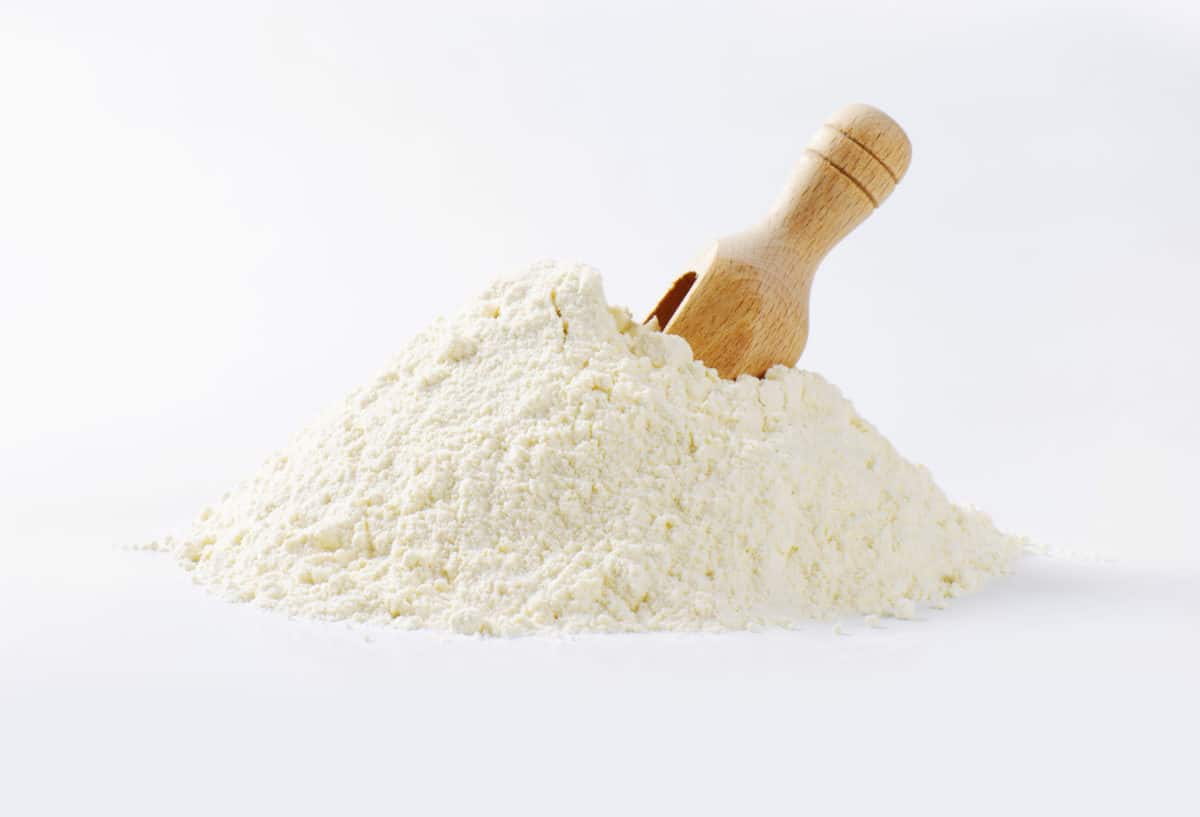During my early gluten-free baking days, plenty of wrecks littered the kitchen counter, including my first Mandelbrot cookies that came out of the oven as one giant sand pile. But after more than a decade baking gluten-free I’ve learned enough to know that there’s always more to learn. And flour is where it all begins.
Understanding the characteristics of gluten-free flour blends, along with the importance of weighing ingredients, are the most important elements of successful gluten-free baking. Some gluten-free flours (such as coconut) are super absorbing and others (like sweet white rice) become gummy. All gluten-free flour weights vary so that if a baker is measuring by volume, the results can change significantly if one type of flour is substituted for another. Always keep in mind that gluten-free flours vary in how they absorb liquids and hold fats. Weighing the flour is a good practice that will yield consistent results.
You’d think that understanding the nuance of gluten-free flour qualities would be enough of a challenge, but there’s more. If a blend contains rice flour that feels gritty – a common problem – it will be evident in the final baked good. To alleviate the grittiness be sure to purchase superfine flours that are purposely milled to mimic the feel of wheat flour. And flour blends that contain legumes will result in overpowering flavors from a back-note of bean. That may be fine for savory baking, but for pastry use neutral flavored grains, such as brown or white rice for the best results.
I have created a gluten-free all-purpose flour blend, called Nosh, made from superfine brown rice flour mixed with superfine white rice flour and tapioca starch in a 2-1-1 ratio (by weight) without any additives like xanthan gum. Xanthan gum is commonly added to many gluten-free flour blends or baking applications because it is believed that it helps mimic the missing gluten. But xanthan gum is a hydrocolloid which helps thicken batter and doesn’t actually create the stretch that gluten does. Cakes, cookies, and even pie crust can be made quite successfully without gums.
Gluten-free breads, however, do require some additives to help the crumb act like bread and not cake. These dough additives, like xanthan gum, pectin and Expandex modified tapioca starch give bread a good tear and appropriate chewiness. A poolish, such as the one in the Quick Challah recipe, gives it a fermented yeasty flavor. Contrary to the myth about the formidable challenge of baking good gluten-free bread, it doesn’t have to be difficult. In fact, single rise gluten-free yeast breads are often extremely successful. Bread recipes in my book Nosh on This also include challahs that can be braided, but this quick challah with poolish is one of the easiest and quickest to prepare. Poolish can be a good complement to other gluten-free bread-making endeavors.
While making challah in a round pan is common for the Jewish New Year (Rosh Hashanah) it can also be prepared in a Pullman (rectangular) loaf pan. The bread is always best when served the day it is baked but leftovers can be used for a variety of other purposes. Grilled sandwiches made with day-old challah are tasty. So are challah croutons mixed with olive oil and herbs, then toasted golden brown. Stale challah makes a fabulous French toast casserole. Cube the stale bread and combine it with gluten-free cornbread to make the base for a savory stuffing.
Mandelbrot is a cookie familiar to everyone who celebrates Jewish holidays. It’s also a cousin to the biscotti and while the ingredients vary slightly, the preparation technique is the same. Mandelbrot, like biscotti, is a twice-baked cookie. My cherry chocolate Mandelbrot is a recipe inspired by a childhood friend’s mom who sent me a note on how to prepare the cookie – “add cherries, plenty of chocolate, then add more.” The combination of cherry and dark chocolate is a winner. While any dried cherry will work well, Bing or tart cherries paired with extra-bittersweet chocolate are excellent choices.
Mandelbrot flavor always improves with age and the cookie keeps for a week or more stored in a tin (hint: gluten-free baked goods stored in plastic get stale and soggy). To refresh most gluten-free cookies, and especially these Mandelbrot, place them in a 150° C (300° F) oven for 5 minutes or so and they’ll be just like new. They also make great food gifts when packaged in cellophane or a tin and tied with a ribbon.
The key to great gluten-free baking is simple. Keep flour ratios in mind, adjust the quantities of fats and liquids based on the characteristics of the flour blend, and always “measure” by weight. Fewer additives are usually better than more. Use superfine, neutral-flavored flours for best results. Remember, gluten-free baking is just baking. And most important, bake some Mandelbrot. Your coffee would like some company. ![]()
[table id=8 /]
GENERAL FLOUR TIPS
• Weighing flour is most accurate, but when using volume measures, stir the flour (only) if it is compacted, and then spoon into the cup, creating a heaping peak, and level off the top with a spoon or knife, for best results.
• When creating the blend, be sure to use a whisk to blend all the flours together so they are light, not compacted, and well mingled with one another. No need to whisk again before using.
• Mix up a large batch of your homemade Nosh AP GF Flour Blend and store in a sealed container, and you will always be ready to bake.
• Nut flours should smell like freshly ground raw nuts and be refrigerated for best flavor.
First published August 2015
